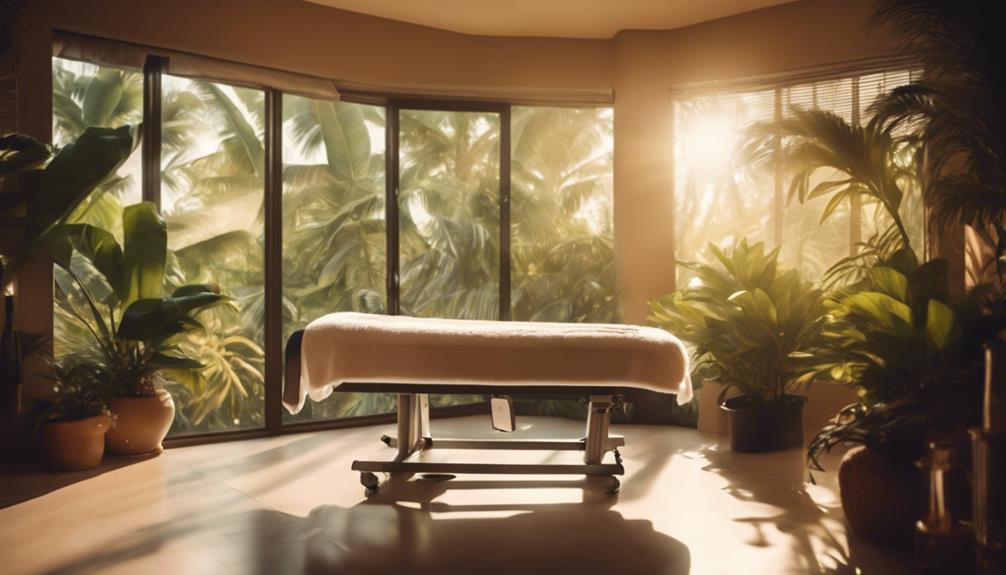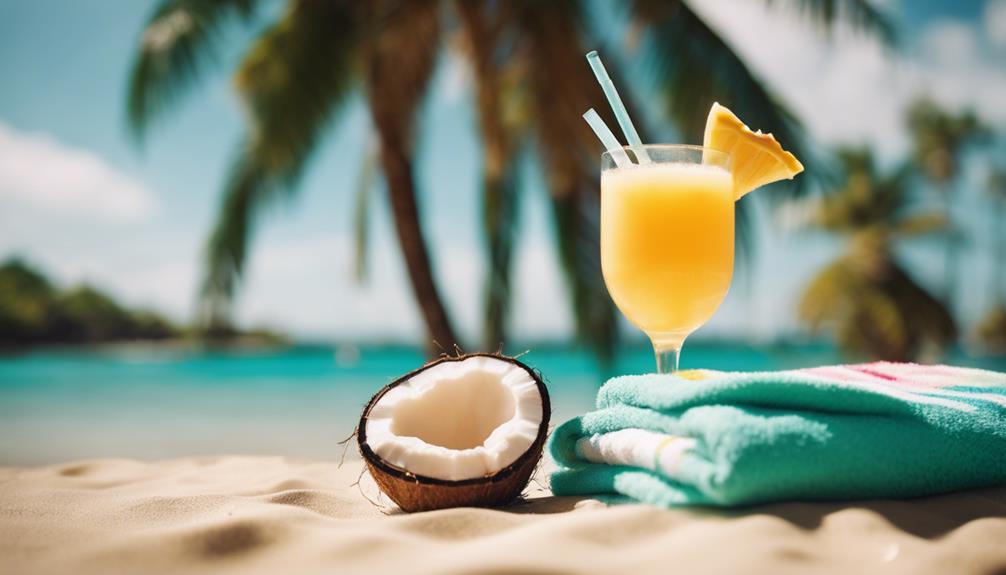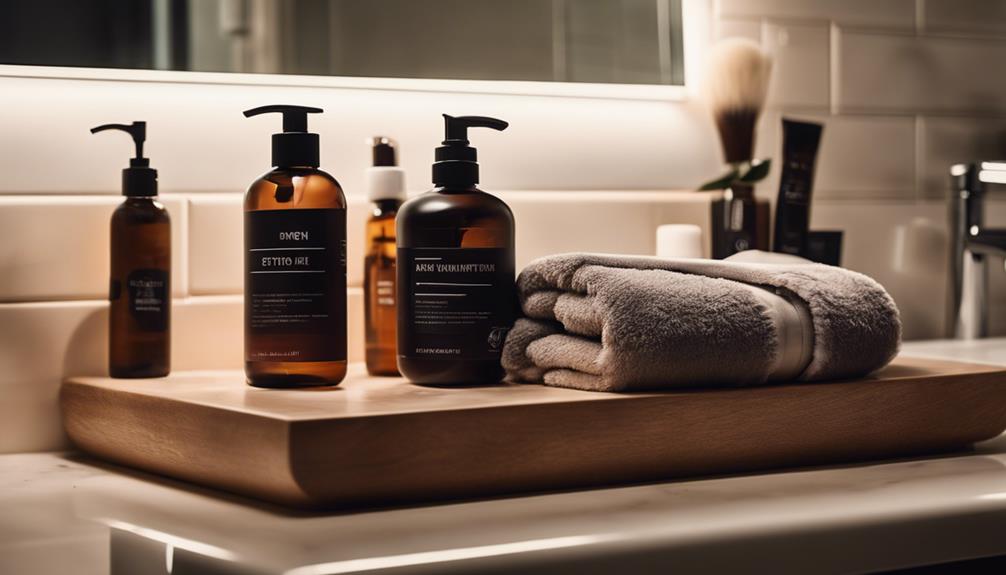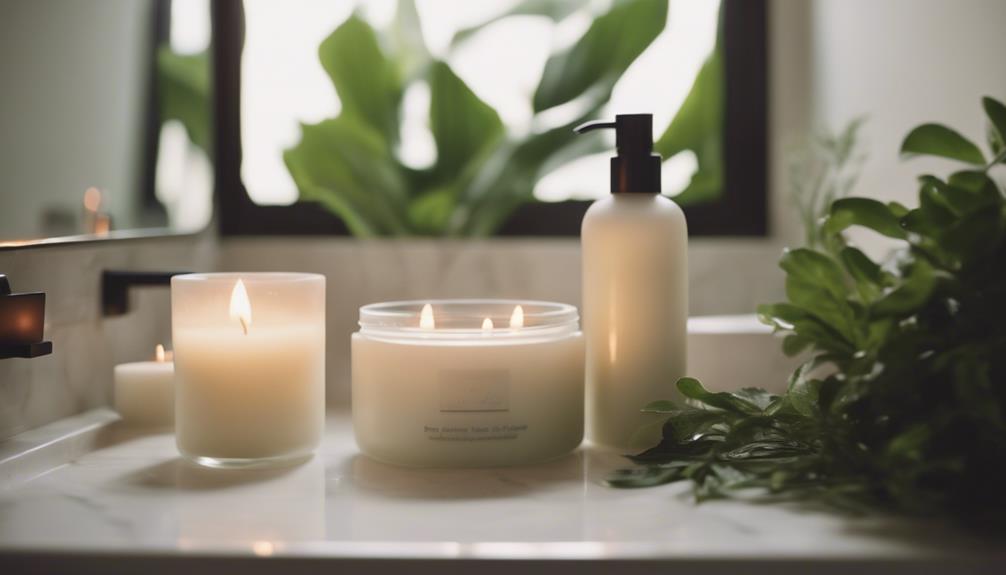Revealing the secrets to successful tanning involves proper preparation, technique, and care. To start, exfoliate to remove dead skin cells – think of your skin as a blank canvas ready for a masterpiece! When using tanning beds, start slowly and follow the recommended time guidelines to avoid burns. Don’t forget to keep your skin hydrated; it acts like a sponge, absorbing moisture for a beautiful glow. After tanning, pamper your skin with a quality moisturizer to make your tan last longer. Keep in mind, even professionals make mistakes! If you want to learn more tips, there is a treasure trove waiting for you!
Key Takeaways
- Exfoliate your skin before tanning to ensure an even application and better absorption of tanning products.
- Start with short tanning bed sessions and gradually increase duration to minimize the risk of burns.
- Maintain hydration by drinking plenty of water and using moisturizers to enhance skin elasticity and prolong your tan.
- Apply sunscreen consistently to protect your skin from UV damage and maintain your tan's vibrancy.
Pre-Tanning Preparation Techniques
To achieve a flawless tan, start with thorough exfoliation to remove dead skin cells and prepare your skin for even absorption. Think of your skin like a canvas; you wouldn't paint on a bumpy surface, right?
Use a soft loofah or a mild scrub in gentle circular motions to avoid any damage.
After exfoliating, consider using a tan accelerator that contains tyrosine and plant extracts. These ingredients can help boost melanin production, giving you that sun-kissed glow you're after.
Don't forget to apply sunscreen too, even if you're tanning! It's like wearing a superhero cape to protect your skin from UV damage.
Effective Use of Tanning Beds

After you've prepared your skin for tanning, understanding how to effectively use tanning beds can greatly enhance your results and minimize the risk of burns. Tanning beds are like magic booths, but you need to use them wisely!
Here are four tips to get the most out of your tanning sessions:
- Start Slow: If you're new, stick to 10-15 minute sessions and gradually increase time.
- Know Your Bed: Familiarize yourself with the bed's features, like UVB balance and intensity settings.
- Timing Matters: Avoid tanning during peak hours (10 am to 4 pm) to protect your skin.
- Stay Consistent: Regular sessions help you build a beautiful tan without overdoing it.
Importance of Hydration

Staying hydrated is essential for achieving and maintaining a vibrant tan, as it helps your skin stay plump and elastic. When you drink enough water, your skin feels happier, and who doesn't want happy skin?
Think of hydration as the secret sauce that keeps your tan looking fresh and fabulous. You wouldn't water a plant only when it looks droopy, right? So, aim for those eight glasses a day, and your skin will thank you!
Plus, using moisturizing lotions, like shea butter or coconut oil, can give your skin an extra boost. Remember, a well-hydrated body is like a sponge—ready to soak up that sun and keep your glow shimmering longer.
Cheers to staying hydrated and looking great!
Essential Post-Tanning Care

Hydrating your skin is just the beginning; proper post-tanning care is key to extending the life of your tan and keeping your skin healthy. Think of it like taking care of a plant; if you neglect it, it won't thrive!
Here are four essential steps to guarantee your tan lasts:
- Use a moisturizing lotion designed for post-tan care to lock in hydration.
- Avoid harsh soaps and scrubs; they can strip away that gorgeous glow.
- Keep an eye on your skin's condition, and adjust your routine if needed.
- Slather on some aloe vera gel for soothing relief after sun exposure.
With these steps, you'll be on your way to flaunting that stunning tan for as long as possible!
Nutrition for Better Tanning

A balanced diet packed with vitamins and omega-3 fatty acids can greatly enhance your tanning results and keep your skin healthy.
Think of your skin as a canvas; the better you nourish it, the more vibrant your tan will be!
Foods rich in vitamins C, E, and A, like oranges, spinach, and carrots, help boost your skin's hydration and elasticity.
Omega-3s, found in fish and walnuts, work wonders for your skin's health too.
So, why not whip up a delicious salmon salad or a smoothie loaded with berries?
Not only will your skin thank you, but your taste buds will have a party, too!
Common Tanning Mistakes

Many people make critical tanning mistakes that can lead to uneven results and skin damage. It's easy to get excited about achieving that perfect glow, but a few slip-ups can ruin your efforts.
Here are some common mistakes you might be making:
- Over-application: Slathering on too much tanning product can cause streaks, like a messy art project gone wrong.
- Neglecting sunscreen: Skipping sunscreen is like leaving the house without your shoes—totally unprepared!
- Ignoring product guidelines: Not following instructions is a recipe for disaster, kinda like trying to bake without a recipe.
- Tanning during peak hours: Tanning between 10 am to 4 pm can lead to burns, like cooking a marshmallow too long!
Avoid these blunders, and you'll be on your way to a fabulous tan!
Tips for Long-Lasting Results

Avoiding common tanning mistakes sets the foundation for achieving long-lasting results, so here are some effective tips to help your tan endure.
First, keep your skin hydrated! Drink plenty of water and use moisturizers like coconut oil to lock in that glow.
After tanning, skip harsh soaps; they're like a bad breakup for your tan! Instead, opt for gentle cleansers and post-tan lotions.
Also, watch your diet—loading up on vitamins A, C, and E can make your skin feel happier and healthier.
Finally, remember to reapply sunscreen regularly to protect your beautiful tan from fading.
Think of your tan as a pizza; you wouldn't let it sit out, right? Treat it well, and it'll stick around!
Frequently Asked Questions
Can I Tan if I Have Sensitive Skin?
Yes, you can tan with sensitive skin, but take precautions. Start with shorter sessions, use gentle products, and always apply sunscreen. Listen to your skin's signals and adjust your routine accordingly for the best results.
How Often Should I Tan for Optimal Results?
If you're like Sarah, who tanned every other day, she achieved a beautiful glow without overdoing it. You should aim for 2-3 sessions per week, adjusting based on your skin's reaction and desired tone.
Are There Specific Products for Tanning on Darker Skin Tones?
Yes, there are products specifically formulated for darker skin tones. Look for those with deeper shades and hydrating ingredients. They enhance melanin production, ensuring a rich, even tan while complementing your natural skin undertones.
Is It Safe to Tan While Using Certain Medications?
While some medications can heighten sun sensitivity, others may not affect your tanning experience. Always consult your doctor before tanning to guarantee your skin's safety, and consider adjusting your routine based on their guidance.
Can I Use Self-Tanner After a Tanning Session?
Yes, you can use self-tanner after a tanning session. Just make sure your skin is clean and dry to avoid uneven application. Allow your tan to settle first for better results and longer-lasting color.
How Can Knowing Your Skin Type Help in Tanning Success?
Knowing your skin for tanning is crucial for achieving a successful and safe tan. Different skin types react differently to sun exposure and tanning products. Understanding your skin type can help you determine the best tanning method and products to use, leading to a more effective and even tan.
Conclusion
Now that you've got the scoop on tanning success, it's time to put your newfound knowledge into action!
Remember, a little prep goes a long way, and by avoiding common mistakes, you'll be well on your way to that sun-kissed glow.
Just like a gardener tends to their plants, you must care for your skin to reap the benefits.
So, roll up your sleeves, embrace the journey, and soon you'll be shining brighter than the sun!









